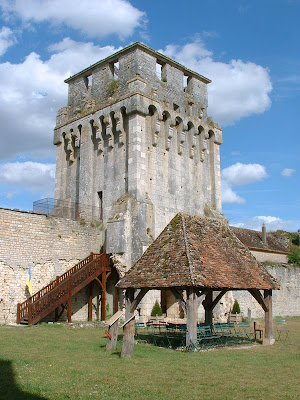


Agrandir le plan
Shortened history of the castle:
The castle is first evoked in a popular tale of the siege of the castle by the troops of Margarete Maultasch, Countess of Tyrol from 1335 to 1363. According to this legend, Margarete Maultasch invaded the duchy and encircled the castle. Months passed and impossible for her troops to conqueer the site. Her forces finally withdrew when the garrison of Hochosterwitz slaughtered its very last ox, filled it with corn and threw it over the wall, pretending it still had so many provisions in stock that they could be used as projectiles.
In the 15th century, Georg of Osterwitz, the castle owner, was captured in a Turkish invasion and died in 1476 in prison without leaving descendants. The castle tehn fell into the hands of Emperor Frederick III of Habsburg.
Over the next thirty years the castle was badly damaged by numerous Turkish campaigns. On 5 October 1509, Emperor Maximilian I handed the castle as a pledge to Matthäus Lang von Wellenburg, then Bishop of Gurk.
In 1571, Baron George Khevenhüller acquired the citadel by purchase. He then greatly fortified the site to resist to the threat of Turkish invasions, building an armoury and 14 gates from 1570-1586. Such massive fortification is considered unique in citadel construction.
Since the 16th century, no major changes have been made to Hochosterwitz.
A 1:25 miniature scale model of Hochosterwitz Castle is located in Minimundus, a popular tourist attraction in Klagenfurt.
Opening times and additionnal information:
- Opening times (the castle interior is private but walking around is allowed and free)
April & October: 9am-5pm
From May to September: 9am-6pm
You cannot drive up to Hochosterwitz, so park your car, put on your sturdy shoes, and start your hike. It will take you about half an hour to walk to the castle.
- Email: info@burg-hochosterwitz.com
- Anecdote: Ascending the hill, you will find a succession of 14 gates designed by the most famous castle-fortification architect of the Middle Ages. Thanks to his skill, the castle was never conquered. Each gate has its own unique brand of protection—one has holes through which hot oil was poured upon the invader, another has a moat, another a drawbridge, another hidden spikes, another fire-torch slots, and so on. If the enemy was clever enough to conquer one gate, he was sure to be defeated before the final entrance.











